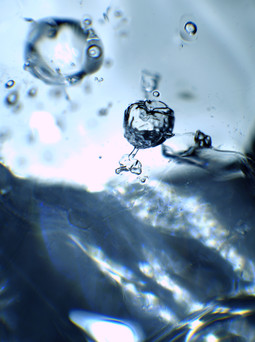
Hui Te Ananui a Tangaroa | New Zealand Maritime Museum
Nov 29 - Aug 31 2025
This project has been a long time in the works. I am so excited to finally share it! Back in October of 2023, I was super fortunate to travel to the wild and remote island of South Georgia as a member of the Antarctic Heritage Trust's 9th Inspiring Explorers expedition. I did a write up about the expedition and my experiences in South Georgia over here on AHT's blog.

So! A major component of these expeditions is outreach - as ambassadors for South Georgia, and the Antarctic region more broadly, we share our learnings and experiences with as wide an audience as possible. For me this year that's involved presentations, blogs and radio shows, but the big one has been a little bit under-wraps - until now!
I'm super thrilled to be exhibiting a diverse range of works alongside my dear friends and fellow explorers Charlie Thomas, Tegan Allpress, and Rose Lasham at this stunning new exhibition at the New Zealand Maritime Museum in Tāmaki Makarau. The exhibition showcases artwork we created during and after our 2023 journey.

The works I created for this exhibition include a special series of glass-printed micrographs, a floor projection and an immersive, musical-audio soundscape.
As I wrote in my blog for AHT, I was utterly awestruck by the scale of the thousands of icebergs we encountered on our journey around the island. The crew had not expected to see icebergs. In the weeks before our arrival, one of the world's largest icebergs (A76A) had run aground on the seabed to the south, fracturing into millions of pieces. Some of these pieces ended up under my microscope. This involved plunging my hands into the freezing waters from a zodiac, and smashing the fragments up with an ice pick.

This ancient ice was full of stunning, sculpted forms, strange structures, trapped pieces of atmosphere and dazzling tricks of light. I like to think of each image as an intentionally tiny window into the staggering vastness that is Antarctica's ice. The original iceberg was an absolute behemoth - 170km long and 25km wide. If it were to run up against New Zealand, it could block the strait between the North and South Island. Of course, this iceberg was itself only a small fragment of a single ice shelf in Antarctica. This is a continent nearly double the size of Australia covered (on average) by 2km of ice. The process of melting fascinated me - how it starts off so very slow but invariably accelerates, how frozen bubbles of ancient atmosphere suddenly start to shift and deform before finally reuniting with the air. Capturing these fragments of ice in their final moments of melting filled me with a strange sense of melancholy. A transition between states: water solid to water liquid, form into formlessness. How long had it been frozen? Possibly thousands of years...! In this exhibition, that exploration has culminated in a video work called Cryosphere: a circular floor projection created from hours of time-lapse footage of melting Antarctic shelf ice and snow.

In my work I've always been interested in distorting scale, seeking vast vistas and landscapes in tiny places. As above so below, patterns in nature often unexpectedly recur at every scale. The Antarctic limpet is an unassuming little mollusc, but to me they seemed intent on resembling South Georgia itself: little islands replete with huddled colonies of organisms clinging to their shells, patterns and structures that seem almost geological and protein film layers that were reminiscient of the icebergs visible from our portholes every day.

The night before I left for South Georgia, close to midnight, my dear friend Jed Prickett dropped in on me with a last minute addition to my inventory - a 3D-Printed parabolic microphone that he and Tor Halle-McIntyre had designed. This dish, rigged up to a Zoom box enabled me to capture some spectacular directional recordings of environments and wildlife during the expedition.

Listening to these recordings is like stepping back into the wilderness - so we were very keen to get these recordings into the exhibition. Throughout the exhibition, there are several speakers playing sounds from South Georgia alongside an ambient piece I composed that was inspired by my experiences of this beautiful, if harsh region.
The piece has no defined beginning or end, and is accentuated in the space by location specific recordings. Listen to it below on my soundcloud:
If you are in Auckland between December 2024 and August 31st 2025, give the exhibition a visit! It is included with entry to the New Zealand Maritime Museum (which is free if you are an Auckland local). The exhibition also features a stunning collection of paintings by artist Paola Folicaldi. These incredibly detailed works, many based on the photographs of Frank Hurley trace Shackelton's epic tale of survival between 1914 and 1916.
A massive thank you to the whole team over at the New Zealand Maritime Museum and Antarctic Heritage Trust! It's been an amazing journey, and I am excited for our artwork and stories to be experienced by visitors in the coming months.
Thanks for reading, mā te wā!

















